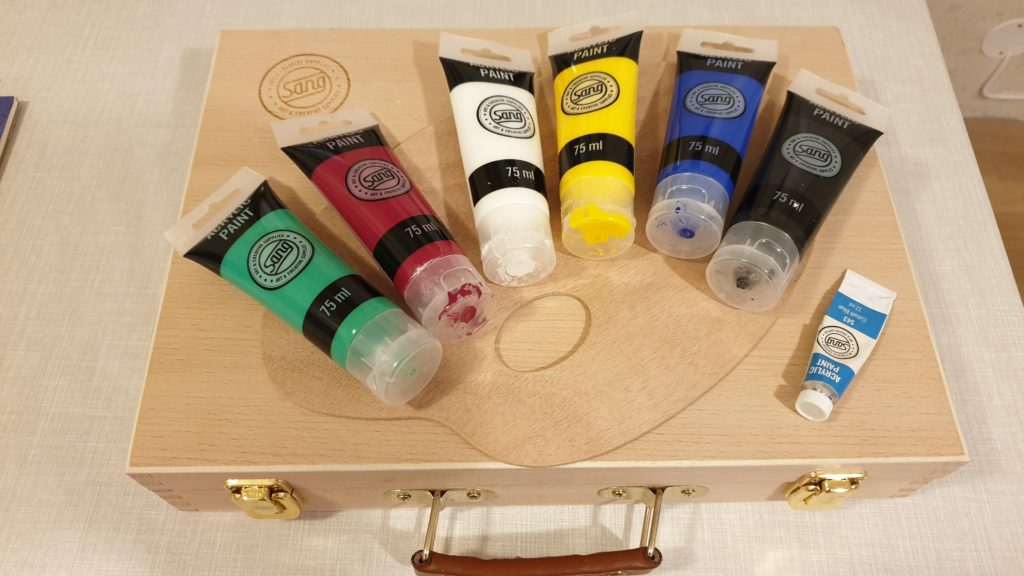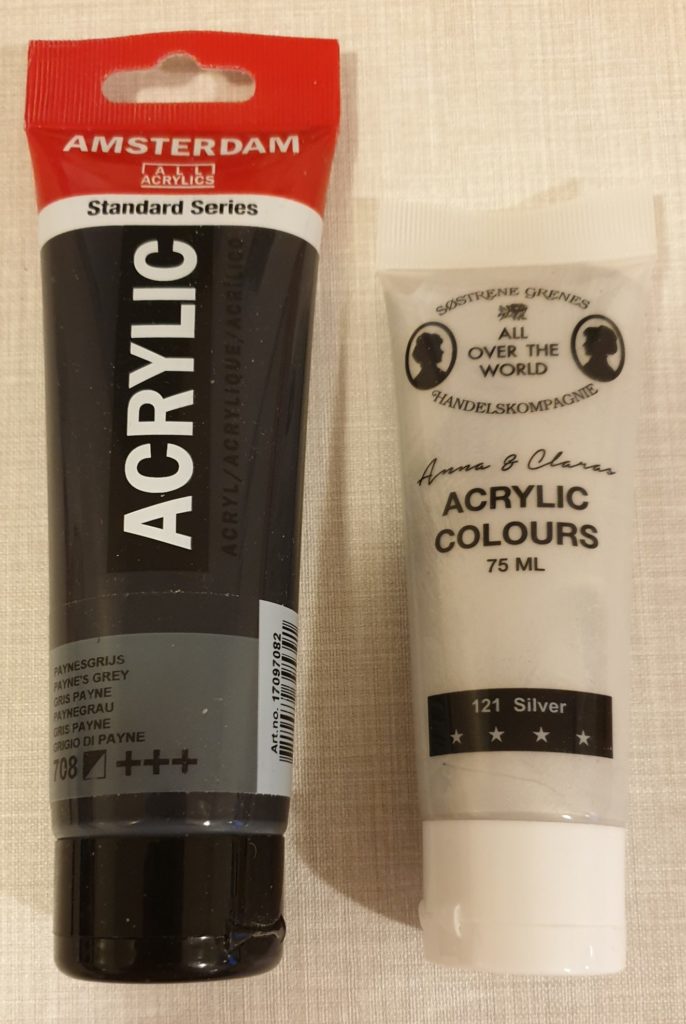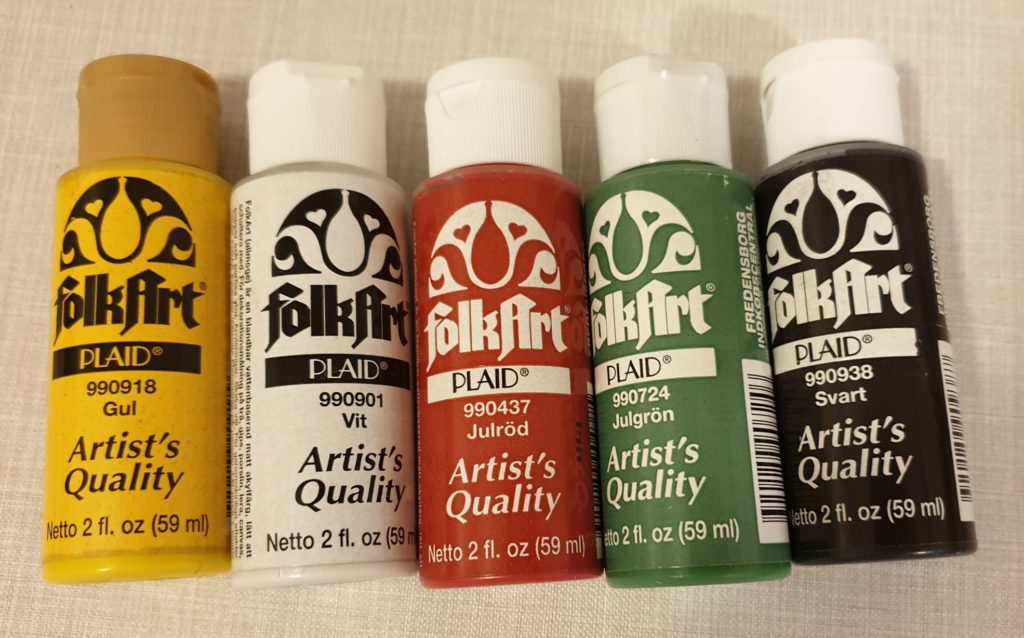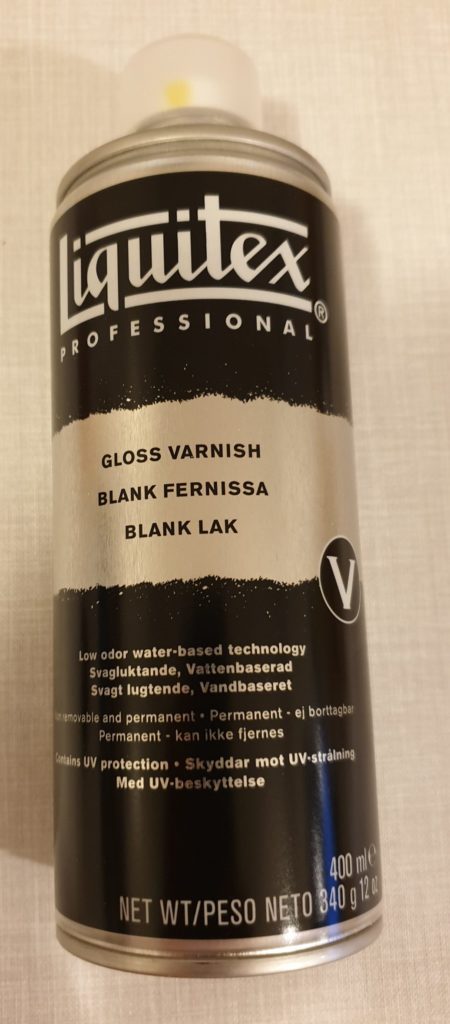So, I started painting. Attending classes to learn how to express me through acrylics, in a way that looks good. While I’ve always had an artistic side, it’s the first time I’ve tried acrylics, and for one single exception the first time I’ve seriously tried painting. (Whatever I did with watercolours when I was a child I don’t count as serious work.)
Of course, to start painting some things are a necessity. Like paint. Some of which I had bought before I even had enjoyed the thought of attending the classes. Acrylics are also nice to paint other objects with, like figures and models. I bought a set of paints for that – never got around to do anything about it though. But I will. Some time.
This means that when I signed up for the classes, I already had some paints. Even in the colours I should have. As luck wanted it, they were even bought in the shop where they sold the recommended brand. Or at least one recommended brand. I also bought myself an easel and a starter set with paint, brushes, wooden palette and even a canvas in that same shop. Turned out the brushes were more suited for oil painting, but I’ve bought more brushes and canvases from other shops, so no problem.

So, why was the brand sold in one shop recommended over another shops own brand of acrylics? It was due to the amount of pigments in the paint and how well it covered. Good thing I bought my paint from the “correct” shop then.

Except – they sold two different brands. I had bought the other brand. Only the name of the shop had been mentioned, not the brand of the recommended paint, so how could I know?
Now, it didn’t prevent me from enjoying painting, and how was the brand I bought, Sang, compared to the other brand, Liquitex Basic, anyway? Amateur as I am, I didn’t feel I had a bad paint – it seemed to cover nicely. I even bought a silver-colour from the not recommended Søstrene Grene for a special project. That colour was very pigmented and covered very well. I also bought a recommended colour, Paynes Grey, from yet another brand, Amsterdam. That one’s still untested, though…
It was Liquitex and Sang that was on my mind, though, and after a while, I did get a bit curious, though. How did Sang compare? Time to turn to the internet.
I found quite a bit of tests and comparisons between different brands. Many different brands, most of which I don’t remember now. The only one I remember the name of is one called Folk Art. As that one was irrelevant to me, I don’t remember how it did, except it wasn’t bad. Liquitex had two variations, the Basic and one Artist Quality, even more pigmented and better covering. Amsterdam also did well. But Sang? I didn’t find anything about it, except on the shop pages. No help there, so I guess I have to test out myself. I’ve bought some Liquitex colours myself now.


While writing this article, it occurred to me that I hadn’t searched for any test of Søstrene Grene, so now I did. One page popped up, where their brand actually was described as a good buy; more pigmented than other well-known brands, and cheap. Not artist quality, but still…
Before I sat down writing, I also got another surprise: While looking for something completely different, more paint turned up. Acrylics. Of the Folk Art brand. I have no recollection of that one – I must’ve had it for years, unopened. Well, it’s going to be fun, trying it all out. What’s “best” also depends on the painting style, I’ve learned.
So with all this said, the question remains: Painting – do I take it seriously?

I would say yes, yes you should take painting seriously. Just like we should take all our endeavours seriously and worthy of our time & attention. 🥰